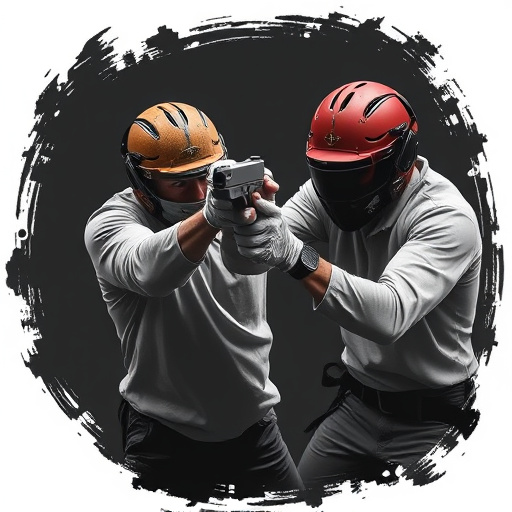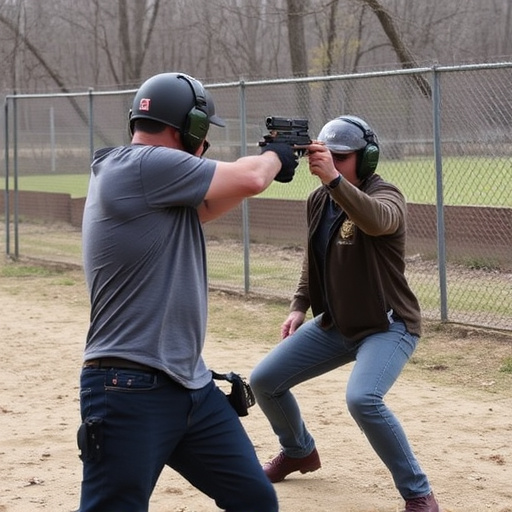Understanding electrical current is vital for harnessing the full potential of best-rated stun guns, which emit powerful pulses (measured in millijoules) to disrupt muscle and brain activity, causing temporary paralysis. These devices primarily use direct current (DC) due to its controllability, with advanced models featuring smart features. Best-rated stun guns provide a safe yet effective self-defense option by temporarily paralyzing attackers without causing serious harm; proper training, knowledge of local laws, and understanding your device's mechanisms are essential for responsible use.
Electrical current flow is the lifeblood of stun devices, determining their effectiveness in incapacitating attackers. This article delves into the science behind this phenomenon, exploring how best-rated stun guns harness electric current to provide powerful self-defense tools. From understanding the fundamentals of electricity to examining the advanced technologies employed in top-tier models, we’ll uncover the safety and considerations surrounding these devices, empowering individuals with knowledge for informed decisions regarding personal safety.
- Understanding Electrical Current: The Backbone of Stun Devices' Effectiveness
- How Best-Rated Stun Guns Utilize Electric Current for Self-Defense
- Safety and Considerations: Navigating the Impact of Electrical Current Flow in Stun Devices
Understanding Electrical Current: The Backbone of Stun Devices' Effectiveness

Understanding Electrical current forms the backbone of the effectiveness of best-rated stun guns for self-defense. It’s a crucial factor that determines the device’s impact on immobilizing an assailant. When activated, stun devices release a powerful electric pulse, measured in millijoules (MJ), which disrupts the normal electrical activity in the muscles and brain. This disruption results in immediate muscle spasms and temporary paralysis, allowing the user to escape or seek help.
The flow of electrical current is what delivers this powerful effect. Direct current (DC) is commonly used in stun devices, as it can be easily controlled and regulated. The intensity and duration of the current play a significant role in causing effective muscle contraction and sensory overload, ensuring that an attacker is temporarily incapacitated. Advanced models even incorporate smart features to optimize current delivery for enhanced safety and performance.
How Best-Rated Stun Guns Utilize Electric Current for Self-Defense

Best-rated stun guns for self-defense employ electric current as their primary tool, offering a powerful and effective means of personal protection. When activated, these devices emit a strong electrical pulse that disrupts the nervous system, temporarily paralyzing an attacker. The current flow is designed to be enough to disable without causing serious harm, making them legal options for self-defense in many regions.
The mechanism behind their effectiveness lies in the sudden and intense electric charge. A stun gun delivers a high voltage, low-current shock that overloads the nerve impulses in the body, sending a wave of electrical energy through the attacker’s muscles and causing them to spasm uncontrollably. This disruption prevents the signals from reaching the brain, resulting in temporary disorientation and weakness, giving the user precious time to escape or call for help. The best-rated models often feature advanced electronics and precision design to ensure consistent performance and a reliable current flow every time they are used.
Safety and Considerations: Navigating the Impact of Electrical Current Flow in Stun Devices

When considering self-defense options, best-rated stun guns offer a powerful yet non-lethal alternative to traditional weapons. However, understanding the electrical current flow within these devices is essential for safety and effectiveness. Stun devices operate by delivering an electric shock, typically through two metal probes or contacts, which disrupt muscle control in the target, causing temporary paralysis. The intensity and duration of the current play a crucial role in ensuring safety and achieving the desired effect without causing severe harm.
Manufacturers carefully design stun guns to balance power with safety features, such as adjustable voltage settings and built-in safety switches. Users should familiarize themselves with these mechanisms to avoid accidental activation and understand the device’s limitations. Proper training and knowledge of local laws regarding stun gun usage are also vital considerations when equipping yourself for self-defense, ensuring both personal safety and legal compliance.
Stun devices, particularly best-rated stun guns for self-defense, effectively utilize electrical current flow as their backbone. By understanding how this current disrupts muscle control and temporarily disables an assailant, users can leverage these tools responsibly for personal safety. Navigating the impact of electrical current flow while considering safety measures is crucial to ensure the optimal use of stun devices in real-world self-defense scenarios.
